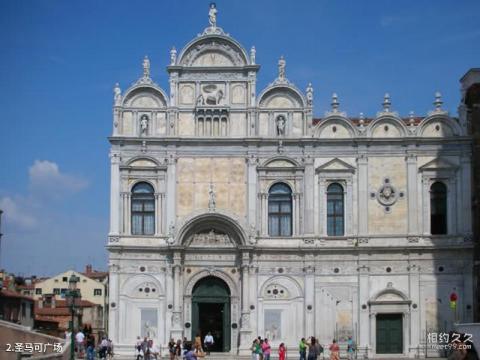
Introduction to St. Mark's Square: St. Mark's Square is more than 170 meters long from east to west, 80 meters wide from east to west, and 55 meters wide from west. It has a total area of about 10,000 square meters and is trapezoidal. The square is surrounded by magnificent palace buildings on the south, north and west sides. To the east is the 98.6-meter-high St. Mark's Bell Tower and St. Mark's Church, which combines Eastern and Western architectural art. To the west is the Doge's Palace and St. Mark's Library. These buildings are harmonious and beautiful, and the stone carvings on the buildings are vivid and lifelike. They can be said to be rare masterpieces in ancient Roman architecture.
Venice has long been an independent water republic. Its political power is jointly controlled by the Governor and the Parliament. It has the characteristics of both autocratic and republican regimes. Since ancient times, Venice has used St. Mark's Square as the center of public activities for its politics, religion and traditional festivals. After Napoleon occupied Venice in 1797, he coveted the scenery here and praised St. Mark's Square as "the most beautiful square in the world". Therefore, he ordered the Doge's Palace next to the square to be converted into a palace. People still call it Napoleon Palace.
Today's St. Mark's Square is the most important scene of the annual carnival. It is always crowded with people. There are countless pigeons flying and landing in the square, coexisting peacefully with tourists.
